The Second Pompeian Style, also called the “Architectural Style,” can be recognized by its three-dimensional elements. It is an extension of the First Pompeian Style.
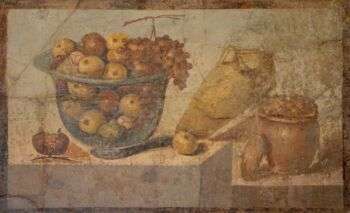
Image source: https://search.creativecommons.org/photos/43cb8aa7-603a-41ab-8e2d-c64414d3b618 by Carole Raddato from FRANKFURT, Germany
The Context
The Second style or “illusionism” uses decorated walls with architectural features and “trick of the eye” compositions. Many elements resemble the First Style, but the style has unique features as well. The technique is about highlighting elements to appear three-dimensional. This style was a famous way of painting in ancient Rome.
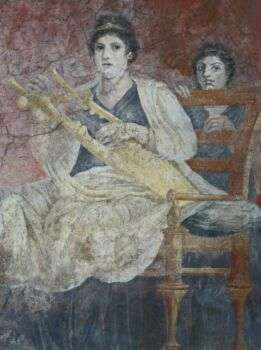
Image source: https://search.creativecommons.org/photos/db7c87dd-4287-4a8d-8103-d428c8f1695b by mharrsch
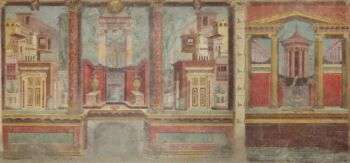
Image source: https://search.creativecommons.org/photos/514cb6b7-bc35-41c2-b66b-451d29993311
It also features relative perspective, to give the idea of the “trompe l’oeil” in painting on the walls. The picture plane was pushed to the back of the wall by painted architectonic features such as Ionic columns or stage platforms. These wall paintings were used to widen the spaces in windowless Roman mansions.
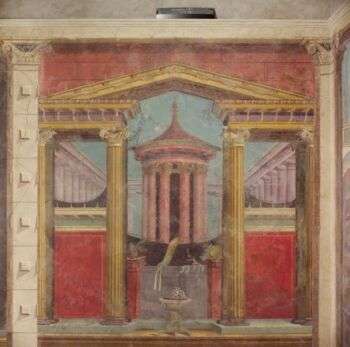
Image source: https://search.creativecommons.org/photos/fbda81fd-9e09-4acc-ae1a-8ee58fb83e41
Images and landscapes painted in the First style became popular and then gained importance with illusionistic and architectonic motives. The decoration was used to create an important impression of depth. The landscape elements, in the end, covered the whole wall, so it looked as if the viewer was looking at a real scene. As the Second Style matured, the goal became to paint scenes of nature. Depth comes from the use of atmospheric perspective.
The Three Style Phases
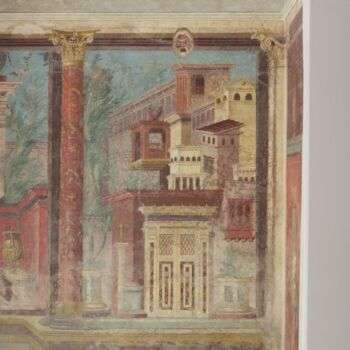
Image source: https://search.creativecommons.org/photos/8874bd77-8409-4eff-ba3b-d6897f95ba43
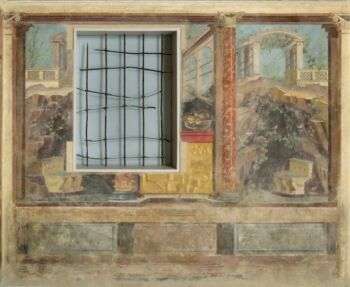
Image source: https://search.creativecommons.org/photos/9f144034-be13-4695-ae91-867e0afae783
It is possible to distinguish several phases of the style:
PHASE 1: The first phase of the Second Style was the introduction of depth as the main feature. It often included painted columns in front of an imitation marble wall or an illusionist perspective ceiling.
PHASE 2: In the second phase of the Second Style, painters started to experiment with more difficult ways of conceiving perspectives. The walls of the room went back into the painted space, which created the illusion of a room inside another.
PHASE 3: In this final Second Style phase, the whole painted wall has illusionist architecture with arches, vaults, and columns. Further, this phase introduced many exotic themes, such as painted griffins, sphinxes, and fantastic creatures.
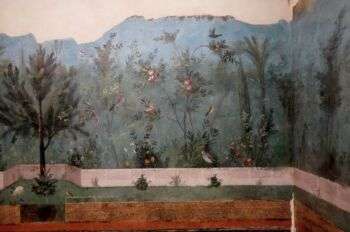
Image source: https://search.creativecommons.org/photos/5cae7d30-0ac7-40f9-a471-97d6ca6c2d00 by Prof. Mortel
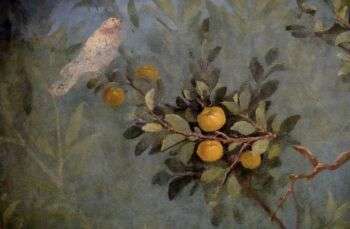
Image source: https://search.creativecommons.org/photos/71a07d99-e665-42f7-b836-c7baa44b3a7b by Prof. Mortel
This style opened up the wall by giving an illusion of windows and porticoes which looked outward to imaginary scenes painted with realistic shading and perspective. Often, these scenes created the illusion that one is looking through a window to the outdoors. Painted architecture, in this style, was heavy and substantial, with a multipoint perspective.
The Second Style
The triclinium of the Villa Oplonti, in the Villa of the Mysteries, and frescoes from the Villa of Boscoreale, which is now hosted in the Metropolitan Museum in New York and the Archaeological Museum of Naples, are examples of the Second Style.
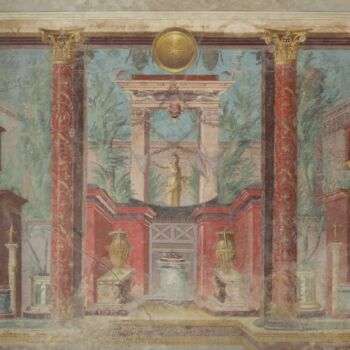
Image source: https://search.creativecommons.org/photos/f2b385bc-c9f7-4805-8767-8a765c65bfab
Info sources: http://www.essential-humanities.net/western-art/painting/roman/
